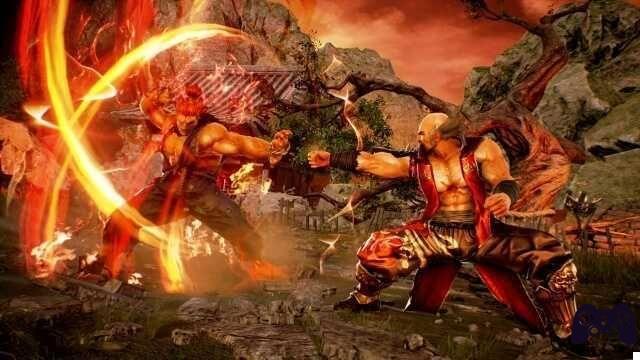The wait is over: Baldur's Gate 3 is finally available for all PC players, and is ready to drag RPG enthusiasts into one of the largest, deepest and most complex adventures ever made, taking advantage of the Sword Coast setting and the rules of the Fifth Edition of Dungeons & Dragons to create an impressive construct to say the least. But it is also a much more complex structure when compared both to the old chapters of Baldur's Gate and to Divinity: Original Sin 2, the latest masterpiece by Larian Studios.
Baldur's Gate 3 is, in fact, a role-playing game in which players can do practically anything they want, while remaining within the strict confines designed by D&D. This means that, unlike the world of Divinity, the choice of class has a fundamental importance and ends up influencing the rest of the campaign, not only in terms of pure combat but also in terms of the social skills of the character you choose to play. embody.
In this guide we have collected everything you need to know about Baldur's Gate 3 classes, including the best classes to start with and a breakdown of the strongest ones. However, keep in mind that we are still a work in progress, so the advice will be based mainly on the contents of the first act of the opera.
How Classes Work in Baldur's Gate 3
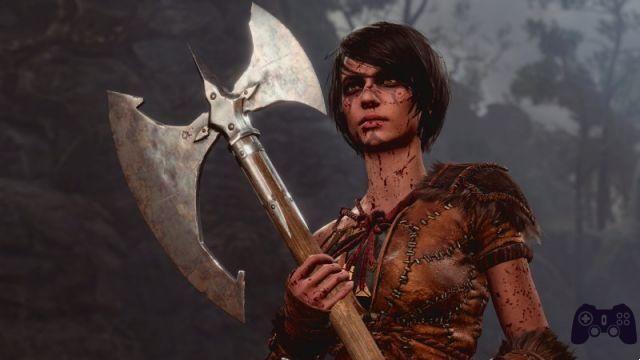
Given the incisiveness of D&D's inspiration, choose your class has a fundamental impact on the gaming experience. Some Races can have particular effects when combined with certain Classes and even some Subclasses - although Larian has partially mitigated this limitation - therefore it is a choice that completely affects the character creation system. However, there is one thing to take into account: the Origin characters - i.e. those with a background that you can use or choose as traveling companions - are linked to predefined classes, so a fundamental piece of advice is to take into account the group you form ; a balanced and synergistic party of characters will be able to prevail in various situations which we will analyze in detail later.
The first very important element that must be kept in mind is that the Class does not only influence the combat, but also the possible interactions with the game world. This means that having certain classes available will even allow you to access unique quests, special dialogues, interactions reserved only for some variants and many other gameplay elements. Druids' ability to speak to animals, for example, can grant access to an extraordinary amount of information that would otherwise remain secret. Likewise, a Class with access to specializations such as Athletics will be able to perform feats that are impossible for others, such as jumping over a particularly large ravine. In short, each Class brings certain unique advantages which is good to take into account.
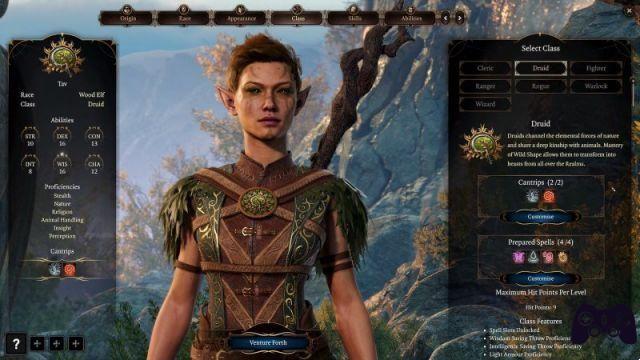
In Baldur's Gate 3 there are a total of 12 basic classes, each with specializations and further subclasses for a total of 46 variations in total. This variety influences the composition of the party: if you come from Divinity, you are probably used to balancing your team members between magicians and physical fighters; in this case, however, things work differently: there is no need to worry too much about the composition, because it is easily possible to proceed with a team of only physical attackers - for example a Warrior, a Thief, a Ranger and a Barbarian - or opt to security for a purely magical composition. Our advice, therefore, is to follow your heart: don't think in terms of min-maxing, because all Classes and teams manage to behave very well.
Speaking of combat, the maximum level is 12 and throughout your journey you will constantly find yourself getting your hands on dozens of new tools to dominate the battlefield. Magical classes, for example, have access to Spells (real magic) e Tricks (unique or more basic skills) that you will have to select; also in this case, our advice is to rely only on the fantasy you want to embroider on your character. In any case there is nothing to worry about: since Act 1 it is in fact possible carry out the Respec, not only of your character but also of the traveling companions you will meet once in the game.
A few words about Multiclassing
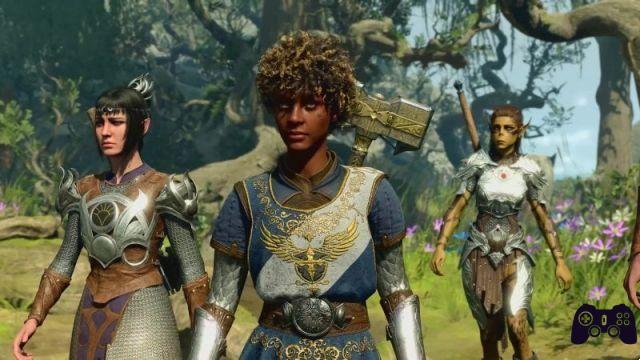
One of the most important innovations compared to the basic rules of D&D, designed to guarantee the player freedom in terms of gameplay, lies in the possibility of doing the so-called Multiclassing. What does it mean? Usually, by carrying out the first level up the player will increase the level of his main class, in order to increase its capabilities and gain access to new fundamental skills. In Baldur's Gate 3 it is possible - when leveling up - to choose to level up a class different from your own initial, in such a way as to access different skills and create hybrid characters, for example a Barbarian capable of using magic. Let's take a practical example to help you understand how it works.
Let's say we have a level 1 Warrior. By going up to "Character Level" 2, we will be able to continue investing in the Warrior, resulting in a level 2 Warrior capable of accessing new characteristics and abilities. Instead, opting for Multiclassing, it is possible to reach level 2 and choose to invest the experience accumulated on the Thief. What does this mean in concrete terms? That our hero will have a "Character Level 2" but a "Class Level" of 1 for both the Warrior and the Thief; he will therefore be more versatile, he will have access to some skills of both classes, but his effectiveness in each of the two will inevitably be reduced. In simple terms, a character who Multiclasses will always have a Character Level higher than the Class Level. You will therefore have already understood what the price to pay for Multiclassing is: if a level 12 Wizard, for example, can use a level 12 spell as strong as Chain Lightning, a hybrid Class will never be able to access the same firepower . This means that you are free to experiment as you want, creating hybrids of all kinds, but keeping in mind that there will always be a small or large price to pay.
All the Classes in Baldur's Gate 3 and how they work
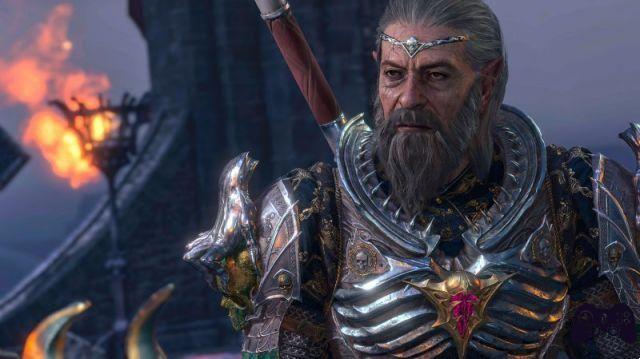
In this section we will analyze all the available Classes, also covering the respective Subclasses, skills and everything you need to know about the most important choice you will have to make in the new Larian Studios title. We won't focus too much on the "lore" and a heartfelt description of what they mean in the game universe, but we will present them from a more technical point of view: we'll talk about what they can do, what they can't do and how well they can do it.
Remember to always think in terms of a group and practically never in terms of an individual, because Baldur's Gate 3 is a title that really rewards collaboration, much more than works like Divinity: Original Sin 2.
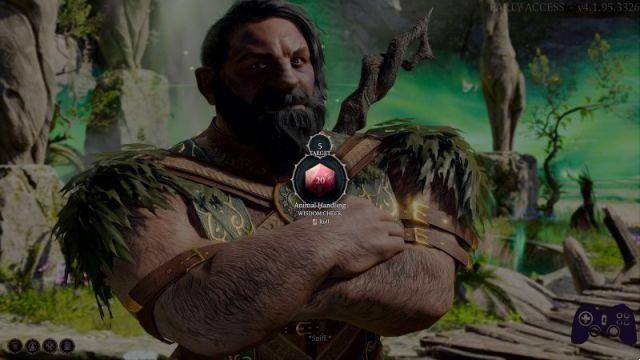
Barbarian
Il Barbarian it is a melee class based primarily on Strength and secondarily on Constitution. He can use any type of weapon very well, but cannot wear heavy armor: he has, however, an intrinsic characteristic that makes his skin as hard as armor, to the point that it is practically possible to play the class bare-chested based solely on multipliers dedicated to the Constitution.
It is, essentially, a hand-to-hand fighter based on the classic characteristic ofWrath, capable of inflicting heavy damage even at the cost of receiving more damage from opponents. As you level up, you gain Initiative - a statistic that allows you to attack first - and becomes immune to the surprise effect, effectively negating most ambushes by groups of enemies; finally he has an extraordinary talent in inflicting Critical Damage. Generally speaking, it is a perfect Class for those who like to throw themselves into the heart of battle without worrying too much about the consequences, wielding a massive ax with which to reap hordes of enemies: but where the fun begins, however, is with its Subclasses.
- Il Berserker embodies the pure essence of the Barbarian: allows you to pick up objects and throw them at enemies dealing bonus damage based on the weight of the thrown object, rely on Rage, as well as perform a extra attack damage each turn that is treated as a bonus action. This means that, when the second physical attack is unlocked at level 5, the Berserker is one of the few Classes that can deliver three slashes in a single turn. In the paper version of D&D his simple stage presence is enough to intimidate even the toughest guards in full armor, so it is possible that continuing in the game will unlock a similar ability.
- Il Totemic Barbarian, however, is a hybridization of an animal type, as if it were a minor variant of the Druid. By choosing this subclass, you can select a "Beast Heart" by choosing from five different beasts: Bear, Eagle, Elk, Tiger and Wolf. Each of the aforementioned hearts allows you to use additional abilities in combat: the Bear, for example, allows you to recover life points or access an enhanced version of Fury which prevents most damage; the Elk allows you to charge enemies from a distance, the Tiger increases the jumping distance to 5 meters and grants an ability that can hit up to a maximum of three enemies, and so on for each heart. The Bear variant is extremely powerful, therefore we recommend it to anyone who loves to throw themselves headlong into battle; Additionally, this subclass gains the native ability to Speak with Animals.
- The path of Wild Magic, finally, recalls the Sorcerer subclass of the same name. In fact, Rage skills can cause a secondary effect among those typical of Wild Magic, but it is good to remember that these effects can be both positive and negative, and are selected completely randomly. Furthermore, these Barbarians have an innate resistance to magic capable of protecting even those around them, and they have the very powerful ability to recover, or have a specific companion recover, a Spell Slot. In short, if you intend to create a party in which you are the predatory Barbarian and your companions are a handful of spellcasters, this is the perfect choice.
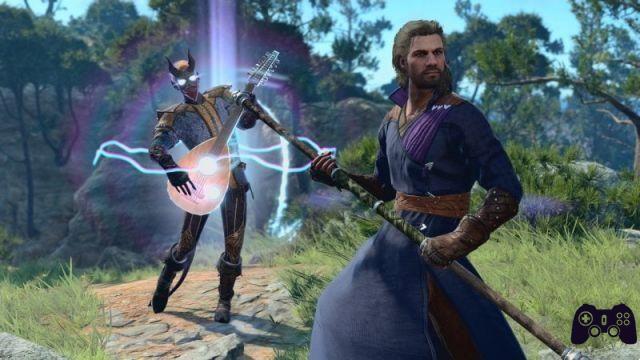
Bard
Il Bard is the inevitable singing class based on Charisma and Dexterity. As per tradition, it is an archetype capable of influencing opponents, enemies and the battlefield thanks to its compositions, as well as accessing a plethora of more or less basic spells, which slowly grow until some are added to the arsenal. among the most powerful abilities in the entire Baldur's Gate 3. He can Inspire his companions thanks to his Charisma, he has an innate ability to interact in unique ways with creatures, he gets bonuses even in Characteristics in which he is not competent: in short, yes This is an essential addition for any group of players.
From the moment of creation it is possible to immediately get your hands on useful Spells and Tricks such as Sleep, which puts a creature to sleep, or Animal Friendship, which transforms a ferocious beast into a cute puppy. It is currently one of the most popular classes in D&D, due to its versatility but above all the effectiveness of its buffs. The Song of Rest, for example, invigorates the party as if they had taken a nap at camp, saving the several minutes of gameplay and resources needed to rest at camp. Furthermore, it can count on an extraordinary amount of very useful skills when interacting with NPCs, including spells that allow you to speak with the dead and others that allow you to read the minds of your interlocutors. Let's now see the differences between the different subclasses, i.e. i Colleges:
- Il College of Wisdom it is the most "magical" variant of the Bard and embodies the imagination of the singer in constant search of new knowledge with which to narrate and entertain his interlocutors. Its fundamental characteristic lies in Sharp Words, a reaction which through the simple use of the word allows you to confuse, anger and strike the interlocutor deeply. He practically embodies a version of the Bard more inclined towards dialogue, magic, control, and less towards direct combat.
- Il College of Value represents the exact opposite: he gains proficiency in shields, martial weapons and medium armor, becoming a hybrid also oriented towards close combat. It remains possible to inspire teammates and oneself through skills aimed at this purpose, it preserves the imagery underlying the Bard, but does not disdain one-on-one situations.
- Il College of Bladesfinally, he is a born fighter, a sort of Jack Sparrow-style buccaneer. Adding to the versatility and comic streak of the classic Bard is the choice of a fighting style - either duelist or two-handed weapons - which opens up a series of extra actions to be used to trip and keep enemies under control. Practically, using the Blade Blooms skill, this type of Bard obtains a long series of unique combat skills, including thrusts, double attacks, teleportations, lunges and many other maneuvers very close to those of a classic Warrior.
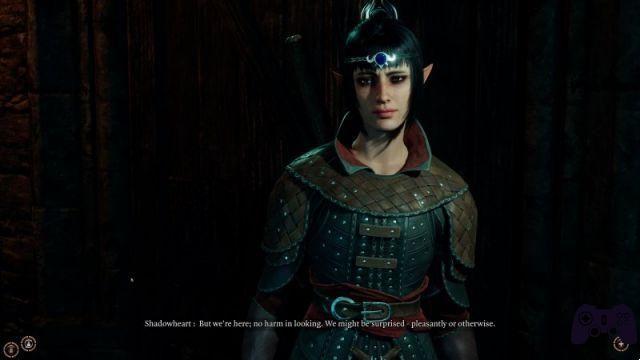
Cleric
Il Cleric embodies the classic archetype based on the Wisdom stat and secondarily on Charisma. Obviously he can wear medium armor, use weapons and equip shields, in the full tradition of the class's imagination, and the presence of the shield does not influence the ability to cast spells.
There is no need to specify that he can rely on a long series of initial cantrips and spells that need no introduction: there is Cure Wounds, there is the ability to create or destroy water, there are various healing and holy damage abilities, it is possible to silence enemies, and there are Command spells that allow you to replicate the classic: "Thou cannot pass" by Gandalf the Grey. The Cleric is different from all other magical classes in the sense that he already knows all the Spells related to his class: once the necessary level is reached, the new Spells will automatically appear in the huge list of skills that can be prepared within of the camp. It's only up to you, therefore, to choose which divine magics to allow him to bring into battle, transforming him into one of the most versatile options in the Baldur's Gate universe.
Instead of the classic Subclasses, the Cleric has access to seven different Divine Domains with which you can expand the list of spells: they are Life, Light, Deception, Knowledge, Nature, Storm and War. These domains, in addition to each having passive bonuses, also allow the Cleric to learn permanently some Spells related to the Domain, which from the moment of choice onwards are considered Innate, therefore they do not need to be prepared. Passive benefits, however, bring different effects: a War Cleric, for example, can wear heavy armor. Let's look at them in more detail:
- Life grants proficiency in heavy armor, also opens up the Blessing and Cure Wounds Domain Spells.
- Luce grants a unique ability that allows you to protect yourself with divine light and blind potential attackers, as well as granting Light, Burning Hands and Fairy Fire.
- Hoax offers a blessing that increases your or an ally's stealth capabilities, before opening up the possibility of disguising your appearance and enchanting opposing creatures.
- Knowledge it allows you to increase your skills, learn languages, and also makes spells such as Command and Sleep innate.
- Natura brings greater communion with nature to the table, allowing you to talk to animals and enchant them at any time.
- Storm harks back to the fantasy of the Sorcerer equivalent, providing offensive elemental abilities that shine when fighting at close range.
- WarFinally, it is dedicated to tanks: in addition to giving proficiency in heavy armor, it renders Innate defensive spells such as Divine Favor and Shield of Faith.

Druid
Il Druid represents the classic entity in total communion with nature, and is based mainly on Wisdom and secondarily on Intelligence. In addition to being a skilled fighter, each Druid is characterized by the control of most of the magics that have to do with nature, being able to count on abilities related to fog, earth, water, air and even fire.
Its main characteristic, however, lies in the relationship with animals, which does not only translate into the ability to communicate with them, but above all in the possibility of assuming a Wild Form, transforming into a plethora of wild animals both in and out of combat, from the crow to the badger, even the spider and many others, each with very powerful unique interactions with the setting and the characters. The Wild Shape gradually improves with the level-up, guaranteeing new options, while the new Spells are added from time to time to the list to prepare from a combat perspective: for these reasons, and for the subclasses, it is an extremely versatile fighter , capable of causing damage and defending his companions, casting magic and throwing himself into the heat of battle.
- The subclass Circle of the Moon it is mainly based on the Wild Shape, and is the best choice for all those who want to focus on the so-called "Combat Wild Shape" and on a series of unique transformations capable of transforming the approach to the game world. The Raven, for example, unlocks immediately upon reaching level 2 with this subclass. The Bear Fighting Form is what made this subclass famous, and it is the one that more than any other allows you to take the bull by the horns, alongside your Warriors in the heart of battle.
- Il Circle of the Earth instead, it is more focused on spells that have a connection to nature, and also gains access to a mechanic called Circles. As you level up, it becomes possible to select certain ecosystem-related Circles that grant additional abilities or powerful passive statistics. To give an example, the Circle of the Prairie grants Invisibility and Pass Without Tracks, which significantly enhance the approach to the stealth phases. Each Circle therefore guarantees a series of innate Spells that are added to the already extensive list typical of the Druid, making the Circle of the Earth the best variant when it comes to pure magic; in this regard, like the Wizard, it is one of the few classes that have the possibility of recovering Spell Slots without needing to rest.
- Il Spore Circle, finally, is the most unique variant of all: entirely devoted to molds, fungi, spores and any symbiotic or parasitic entity of the case, it features a plethora of strange abilities aimed both at attack and protection, and is essentially a class self-sufficient. This is a variant that tends to sacrifice the use of the Wild Shape in favor of the activation of additional effects linked to the abilities related to the spores, which inflict heavy necrotic damage and make it very risky to approach the Druid in question. This is undoubtedly a niche choice, difficult to integrate into a well-balanced party.
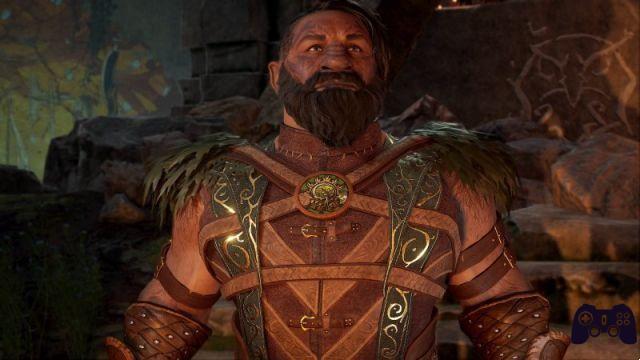
Warrior
Il Warrior he is the hand-to-hand fighter by definition, and as such grows anchored purely in Strength and Constitution. This is undoubtedly the best choice if you intend to impersonate a Tank, since he has all the necessary skills to wear any type of armor and equip any type of weapon.
In addition to being extremely durable, he is lethal in one-on-one situations, can heal himself in combat with Energy Recover and can even gain additional action points in combat from the beginning of the adventure. On the other hand, it is a very simple class, therefore it could be the least "fun" and colorful choice for eclectic players: it's about throwing yourself into the fray and simply decimating your opponents thanks to your physical superiority and in handling weapons. The subclasses, however, change it profoundly.
- Il Battle Master takes the essence of the Warrior and doubles down across the board, effectively betting everything on hand-to-hand combat and combat supremacy. Starting from level 3 you gain access to a series of skills famously called Maneuvers and governed by a dedicated die: you can attempt to disarm or knock the enemy to the ground, prepare for a devastating counterattack in case of dodging, push the enemy, scare him and so on, effectively expanding the arsenal of available techniques greatly. This makes it one of the strongest classes, if not the strongest ever: thanks to the innate ability to perform as many as three actions per turn, a Warrior of this type is able to render three different enemies helpless every time he moves, also inflicting an extraordinary amount of damage.
- Il Wizard Knight it is undoubtedly the most classic and easy to explain variant: its fundamental characteristic is that of unlocking spell slots and a list of spells from which to draw to create a sort of hybrid magical warrior capable of absorbing the best of both worlds without having to incur in the typical Multiclassing penalties. The Spells you can access are at most Level 3, so this is a limited selection. Our advice, in all honesty, is to avoid this subclass: the only benefit is to enchant weapons and use them to perform bonus attacks.
- The samplefinally, he embodies total physical and athletic supremacy, on and off the battlefield. In addition to boasting devastating bonuses to damage and critical hit chance—which directly affect dice rolls—he gains enormous bonuses to all checks involving Strength, Dexterity, and Constitution, proving himself capable of physical feats beyond the reach of anyone else. This feature also extends to jumping distance, strength and several other elements that govern interactions with the game world. Furthermore, much of its effectiveness depends on the improved attack, which allows you to take an extra offensive action each turn.
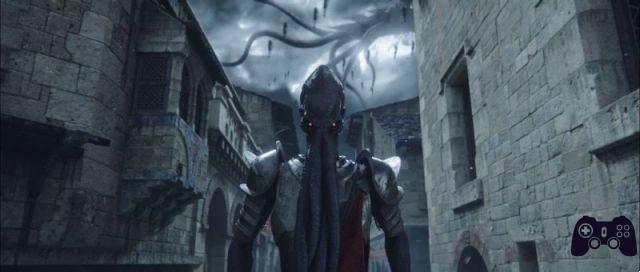
Monaco
Il Monaco he is a hand-to-hand fighter strongly inspired by the ideal of Tibetan monks who bases his characteristics on Dexterity and Wisdom. He is nothing other than an expert in martial art and meditation: he can attack even if unarmed, he gains access to the form of energy called Ki to carry out special attacks, he relies on particularly unique skills such as those linked to the Wind Pass, not to mention that his level of mental peace allows him to resist poison, diseases, even to reject bullets back to the sender with minimal effort.
Its subclasses, in this case three different Paths, embody the perfect interpretation of what a monk should be.
- La Way of the Open Hand it is, as the name suggests, nothing less than the street of slaps. By manipulating the opponents' Ki through melee it is possible to control them, make them inert, leave them lying on the ground and so on; in the same way, it is a variant focused on mental peace and therefore not only capable of healing oneself, but also of accessing particular spiritual abilities.
- La Street of Shadows instead it represents a dark path, entirely devoted to stealth and subterfuge. Illusions, magic that causes silence, duplication of spells: this is only the prelude to the control of the shadow that only comes with the progress of the journey. At a certain point it becomes possible to become invisible as soon as you are in the darkness, and even use Shadow Step to immediately pass from a particular shadow to that of another creature.
- La Street of the Four Elements it is essentially a hybrid formula that associates certain blows, through the use of Ki, with the effects of certain elemental spells. Fangs of the Fire Serpent, for example, hits an enemy three times, but instead of dealing physical damage, it converts it to the fire element. This subclass opens up a variety of martial techniques designed to cover different schools of elemental magic.
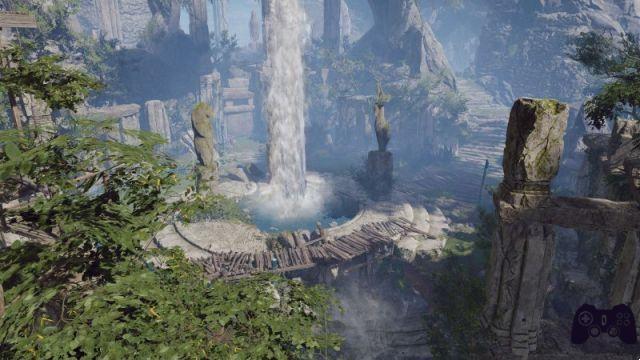
Paladin
Il Paladin It absolutely needs no introduction, and is a class based on Strength, then equally on Wisdom and Charisma, depending on the choices you intend to make. It goes without saying that the Paladin represents the embodiment of a sacred oath, capable of conferring powers of a divine nature on warriors who sometimes stand as protection of the weak and on other occasions as swords to overthrow evil at any cost. Obviously Paladins can count on a great variety of divine abilities and control of creatures such as the undead, wearing heavy armor and equipping practically any type of weapon, not to mention that they can opt for specific fighting styles, which be it holding a shield or devoting both hands to a greatsword. The subclasses, or oaths, however, change several cards on the table and are available from the moment of character creation.
- Il Oath of Devotion immediately provides access to an ability that bestows a vengeful aura around the affected person. Furthermore, this path specializes in fighting undead, using sacred powers and fundamentally embodying the classic imagery of the paladin who drives away evil.
- Il Oath of the Ancients begin the adventure with a powerful area heal. Unlike the previous one, he does not immediately gain access to sacred abilities, but specializes in mixing with nature, gaining access to abilities such as Moonbeam.
- Il Oath of Vengeance instead he embodies the imagery of the classic Retribution Paladin, born to hunt down outlaws. It is a vengeful force that has access to various abjuration abilities, going so far as to channel divinity in order to overthrow its enemies.
- L'apostatesfinally, it is a secret Subclass: to obtain it it is necessary to perform evil acts with a Paladin. It will be enough for you, starting from Act 1, to carry out all the most despicable gestures possible during the missions, torturing innocents or killing inert people to the point of breaking your oath. Obviously, this subclass gets exclusive access to a series of particularly dark skills, such as Crown of Suffering and many others.
However, there are some things you need to keep in mind when playing a Paladin, because breaking the Oath leads to the loss of powers. Let's analyze in detail how Oaths work:
- Il Oath of Devotion it requires you to help the weak and prove yourself as a beacon of hope, so to break it you simply need to do any evil or cruel act. Going back on your word, attacking someone you promised not to hurt, and other actions of this type are enough to break him. Respecting the law is fundamental: even just theft can lead to apostasy.
- Il Oath of the Ancients it harks back to the imagination of the Green Knights: they are Paladins who have sworn to protect life, therefore also plants, animals and the natural order in a broad sense. Protecting the good, acts of mercy, and other positive gestures are the foundations of the Oath, which is however not tied to the law. The morality of these Paladins is therefore quite different, disconnected from the norms of society.
- Il Oath of Vengeance it is based on a very simple principle: no mercy must be shown to evil and the wicked. This means that while it is best to avoid attacking first, you must always go all the way when spotting an evildoer. Going against this simple principle will lead to apostasy.
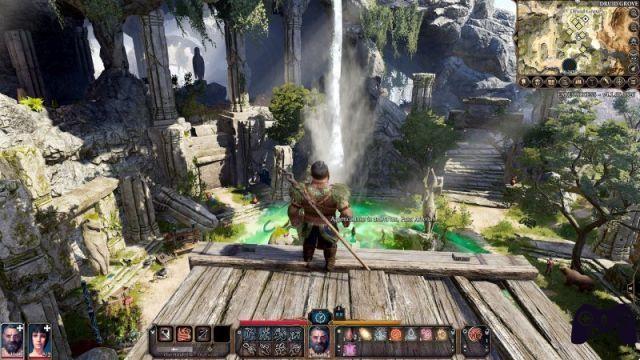
Cleaning
Il Cleaning it's the perfect choice if you grew up dreaming of playing Legolas, armed with a bow or a pair of blades, and it's based entirely on Dexterity, to which Strength is second only. His skills as a scout and explorer are almost unmatched, and this brings tangible effects in terms of gameplay through a series of advantages unique to the class.
First of all, it is possible to choose a preferred "target", that is, a type of creature, a race, a style of fighters such as wizards, in order to obtain additional proficiencies and above all a clear advantage in combat against them. Furthermore, you must select a particular talent in exploring an environment, be it the wild lands or the city jungle, obtaining a series of very impactful bonuses when it comes to moving in a certain setting. Rangers are also considered hybrid Spellcasters, so they can cast and equip Spells up to half their level: a Level 12 Ranger will have an effective Spellcaster level of 6.
- Il Lord of the Beasts it is a variant of the Ranger that gains the possibility of summoning a Companion in combat with which to form a bond, effectively doubling the actions on the battlefield and opening up new gameplay variations. You can choose a bear, a boar, a giant spider, a crow and a wolf, each with particular characteristics.
- Il Cacciatore, however, represents the definitive hunter, and is a subclass that can in turn specialize in different variations: Colossus Slayer rewards damage against the single target, Giant Killer allows an extra action if the enemy is larger than the character, while Horde Breaker (which is available by default) opens up the possibility of a double attack if there are many opponents nearby.
- Il Monster Slayerfinally, it embodies the imagery of the Ranger hidden in the shadows, equipped with night vision, capable of emerging from nowhere to start devastating ambushes. He also gains access to Dark Magic, which allows him to camouflage himself in certain circumstances and increase the effectiveness of reconnaissance.
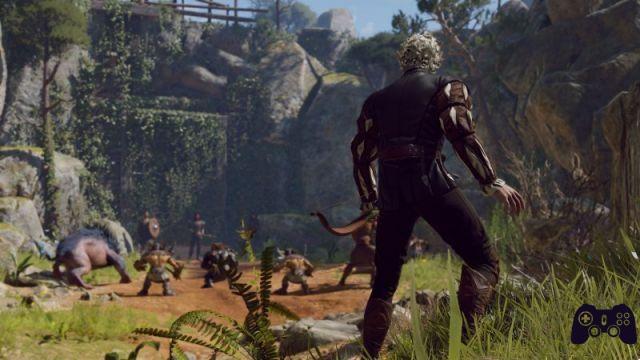
Thief
Il Thief he is the inevitable incarnation of the bandit who stabs his victims in the back, and is based on Dexterity and Intelligence. Short swords, rapiers, surprise attacks, sudden escapes, extraordinary reflexes: in Baldur's Gate 3 there is the complete package to transform into real nightmares for the opposing forces. Thieves revolve around the ability to carry out theSneak Attack, a surprise attack that can only be carried out when you are in an Advantage position (in an elevated position, behind the enemy, etc.) that inflicts devastating damage.
To help them achieve this, they can innately rely on an additional set of extra actions that allow them to move, reposition and vanish from the battlefield, in order to prepare the next ambush. Even in this case, however, the gameplay changes profoundly depending on the Subclass chosen by leveling up.
- Il Rascal is the ultimate celebration of the thief in the fantasy universe. Its fundamental feature lies in access to a second bonus action point to be exploited every turn, an element which in the hands of a Thief can bring devastating consequences. Furthermore, he rather quickly gains total immunity to fall damage, which also changes the approach to exploration, a segment in which this subclass has very few comparisons.
- Il Arcane Mystifier he is nothing more than a Thief capable of mastering magic, especially in the form of the Arcane Hand, a ghostly hand that can be summoned to carry out numerous tasks completely independently of the character. This is the most powerful infiltration class: Baldur's Gate 3 is not just about fighting, and you will often have to free a character imprisoned inside a fortress, or have to steal a particularly protected artifact. By detaching an Arcane Trickster from the group with the G command, you can send him on a solo mission, and trust that nothing will be able to stop him when it comes to stealth.
- L'murderess, in the orbit of D&D, is one of the strongest classes ever, capable of exploiting Assassination to guarantee critical damage to any creature unaware of its presence. His true power manifests itself in the endgame, when he has all the characteristics and above all the equipment to make the most of his kit: thanks to the Ambush and Initiative abilities, he can practically inflict Critical Damage on command on unaware opponents. Furthermore, he has a passive talent that allows you to immediately recover actions and action points after starting the fight in Stealth. If used intelligently, entering and exiting combat, he proves to be one of the deadliest characters on the roster.
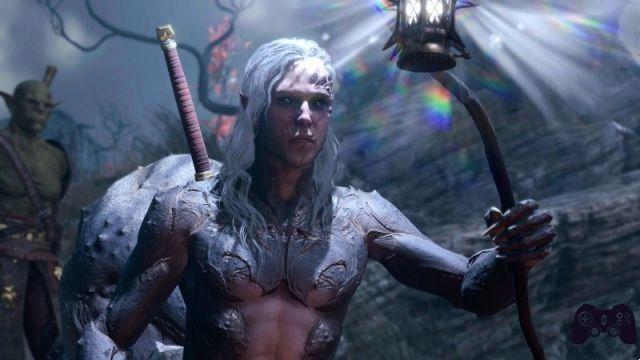
sorcerer
Lo sorcerer he is a natural wizard, in the sense that his magic comes from his person, perhaps due to a particular bloodline, and is oriented towards Charisma and Constitution. The main characteristic of the Sorcerer lies in Metamagic, or the ability to alter magic to give it additional or unexpected effects, for example by increasing the casting distance, caution or even casting twin spells, capable of hitting more than one target.
Let's look at some concrete examples of Metamagic:
- The Precise Spell Metamagic allows you to cast a Spell even with an area effect without damaging your companions in any way. It may seem trivial, but many of the strongest Level 5 and 6 Spells will often end up affecting the rest of the party as well.
- The Quick Spell Metamagic instead allows you to cast two Spells per turn, and we believe there is no need to explain why it is so strong.
- The Distant Spell metamagic greatly increases the range of the Spell
- The Double Spell Metamagic allows you to select two targets for the Spell you are casting
Given his characteristics, the Sorcerer starts with a decent arsenal, and evolves heavily depending on the selected Subclass.
- Wild Magic: Basically, every time you cast a Spell it will have random additional effects. They can be positive or negative, and range from turning yourself into cows to healing all party members to the maximum, so it's ideal if you like to gamble. As you level up, the variance is reduced: you will gradually gain the possibility to choose between more effects and limit the chance, in such a way as to make the class a superpower.
- Draconic Ancestry: This is undoubtedly the most balanced and probably the strongest subclass. Basically it provides a bonus to armor and above all a bonus to health which becomes really significant once you reach level 12. Furthermore, you can choose your affinity with a particular dragon, obtaining benefits related to specific elements, such as increased damage and resistances . Since there are tons of Fire-type Spells in Baldur's Gate 3, a Sorcerer with this affinity turns into an unstoppable war machine capable of resisting hits much more than other pure casters.
- Storm Sorcery: It is a subclass embroidered around the element of Lightning. Basically, whenever you cast a Lightning Spell you will be free to use Flight to reach any visible position; you can therefore play in two ways: either by firing Spells and then repositioning yourself in safety, or - and it is the choice that pays the most - by taking advantage of the flight to throw yourself into the thick of the action and unleash the real storm. In fact, by leveling up, this subclass gains innate powers that cause enormous Lightning damage to nearby enemies. The problem? If your opponent is immune or resistant to Lightning, you won't be able to even give him a scratch, but everyone else will be reduced to ashes.
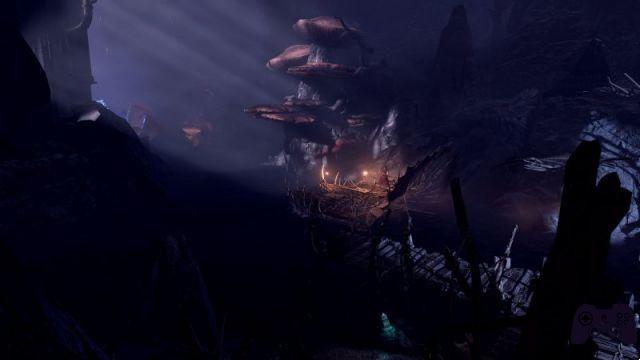
Warlock
Il Warlock it is a powerful magical class that draws its power from a pact with a certain creature, and it is a class based on Charisma and Wisdom. The different categories of Warlock change profoundly depending on the entity with which they have made the pact, the entity to which they are subservient and which acts as the source of their powers. Consequently, the Warlock is one of the classes, if not the class that changes the most with the choice of Subclass, available from character creation.
The Warlock's main strength lies in its special Spell Slots, which always reach the highest level among those available. This means that all the Spells you learn will always be "upgraded" to the highest level you have available, making them very strong in the final stages of the adventure. The penalty, just like for the Sorcerer, lies in the amount of Spells available: you will only be limited to what you choose to learn when you level up, with some important exceptions.
There is in fact more: the Warlock, for example, starts with Occult Blast already in his arsenal, a very powerful ray deriving from his pact that can be used infinitely and which is nothing short of devastating in the initial phases. Furthermore, by leveling up it is possible to increase the depth of the pact with the creature that regulates the Warlock's powers, gaining access to active and passive abilities of all kinds, including particular evocations. In fact, the choice of subclass ends up influencing what the Warlock can and cannot do, opening up a range of unique capabilities:
- If the pact is with a Unclean the skills will be based on Fire, Poison, Miasmas and many other options of this kind.
- If the pact is with a Great Ancient You'll get several Control Spells as well as options to read minds and psychically target opponents.
- If the pact is with a Fey you will have access to Charm Spells, invisibility, the ability to tame beasts and many other such options.
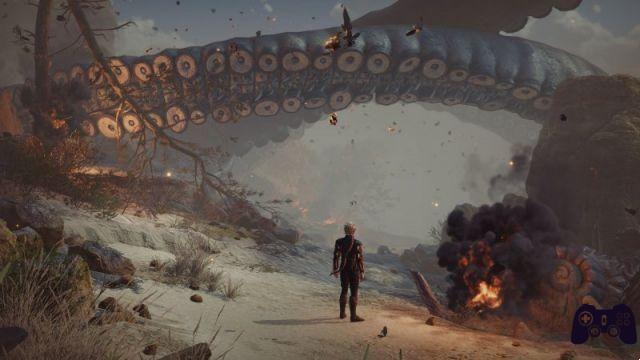
Wizard
We have finally arrived at Wizard, the last class on our list, which is based solely on Intelligence and Wisdom. Since the Wizard is the embodiment of knowledge gained through study and dedication, it is the only class that can actually learn new Spells within the game world, learning the scrolls it comes across.
This, in fact, makes it the only class of this type that is capable of learning every single spell available, creating a gigantic arsenal from which, however, the best options must be chosen from time to time. It is therefore a class that rewards careful preparation of the individual clash. Another fundamental characteristic of the Wizard lies in the ability to recharge the uses of the Spells in the respective Slots, allowing him to stay in battle for much longer than his magical counterparts. For the rest the class is quite straight and simple, and together with the Sorcerer it has no difficulty in casting Level 6 Spells, the most powerful in Baldur's Gate 3.
Rather than opting for a subclass, the Wizard can choose between eight different schools of magic in which to obtain important active and passive bonuses: these are Abjuration, Evocation, Enchantment, Illusion, Divination, Necromancy, Transmutation and Enchantment. Choosing a school confers a series of unique benefits that are not limited only to combat: basically each school halves the gold cost required to learn the corresponding scrolls, and also grants abilities and perks that change certain approaches to gameplay. For example, the school of Transmutation opens up to the creation of Stones of Transmutation, while that of Abjuration opens up to the total cancellation of damage directed towards an allied creature or the use of Counterspells. In short, there are dozens of different solutions that represent only an extra compared to the ability to store any spell in your book for a small price.
The strongest classes in Baldur's Gate 3
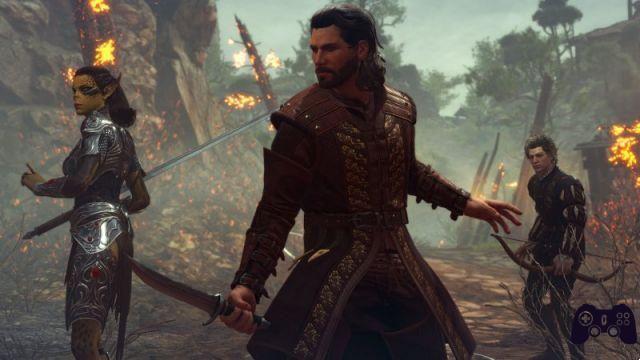
Let's start with a very important piece of advice: Baldur's Gate 3 has been balanced to be completed even in Tactical mode by any type of composition, therefore we suggest you focus solely on your imagination and the imagery that you have decided to embroider around your characters. If you are playing with a group of friends this won't be a problem, but the best tip we can give you is to play what you want and which is more fun for you. All Classes are equally effective and can count on different synergies, but some are slightly better than others.
Like Divinity: Original Sin 2, Baldur's Gate 3 also suffers from a small flaw in the combat mechanics right from the start: the most important thing is always inflict as much damage as possible and receive small quantities, period. The work offers many different solutions, dozens of spells and particular abilities, but when a violent critical blow is enough to silence a boss's henchmen, well, violence constantly becomes the best solution. There Strongest class of Baldur's Gate 3 is currently the Master Battle Warrior; the amount of skills dedicated to enemy control, the ability to use all weapons and armor, the exaggerated critical damage and the ease with which you can play at your best, make it the perfect choice to face the adventure in Tactics.
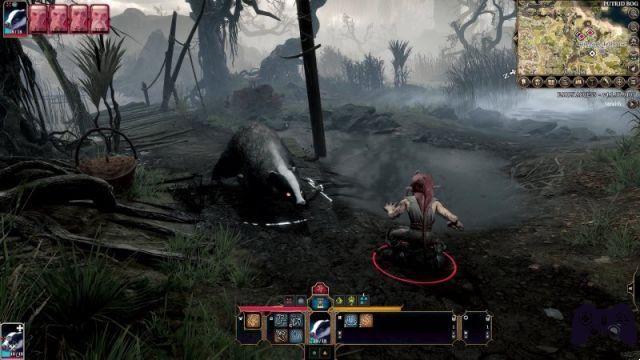
Behind him we find the Barbarian and Paladin, for very similar reasons. Powerful weapons, high-caliber armor and resistances, the ability to attack two or even three times per turn, and many other tasty advantages make them very solid choices. If the Barbarian is the class with the greatest physical damage output, the Paladin can rely on several extremely effective magical abilities, but above all on the Apostate, probably the most powerful Subclass in the work. It is no exception, however sorcerer: the Class itself is probably unmatched in terms of pure control and damage, but it scales very slowly - in full respect of the Larian tradition - to the point that we tremble at the mere thought of what it could become once it reaches level 12 .
For the rest, all other classes are equally viable, each with well-defined pros and cons. The Rogue, for example, deals mind-boggling damage, but its effectiveness is mostly limited to single target and single turn, falling short when things drag on. In an extremely balanced panorama, the only options that at the moment seem to be positioned just a tad below average are the Warlock and the Bard: by putting many different skills on the table, each capable of covering particular situations, they end up doing worse than the others in terms of damage and defenses, which once again represent the central elements of the system. We remind you once again, on the other hand, that you should choose what you prefer, especially keeping in mind that you will not only carry the Classes with you in combat, but also in exploration, during dialogues, investigations and the hundreds of activities that they embrace the city of Baldur's Gate.





